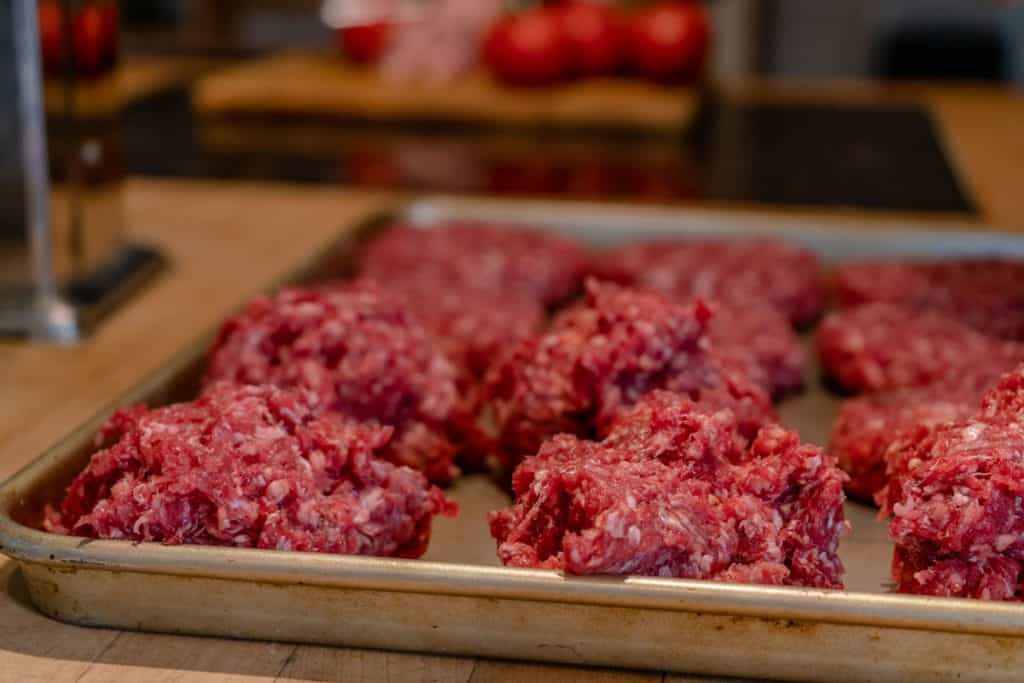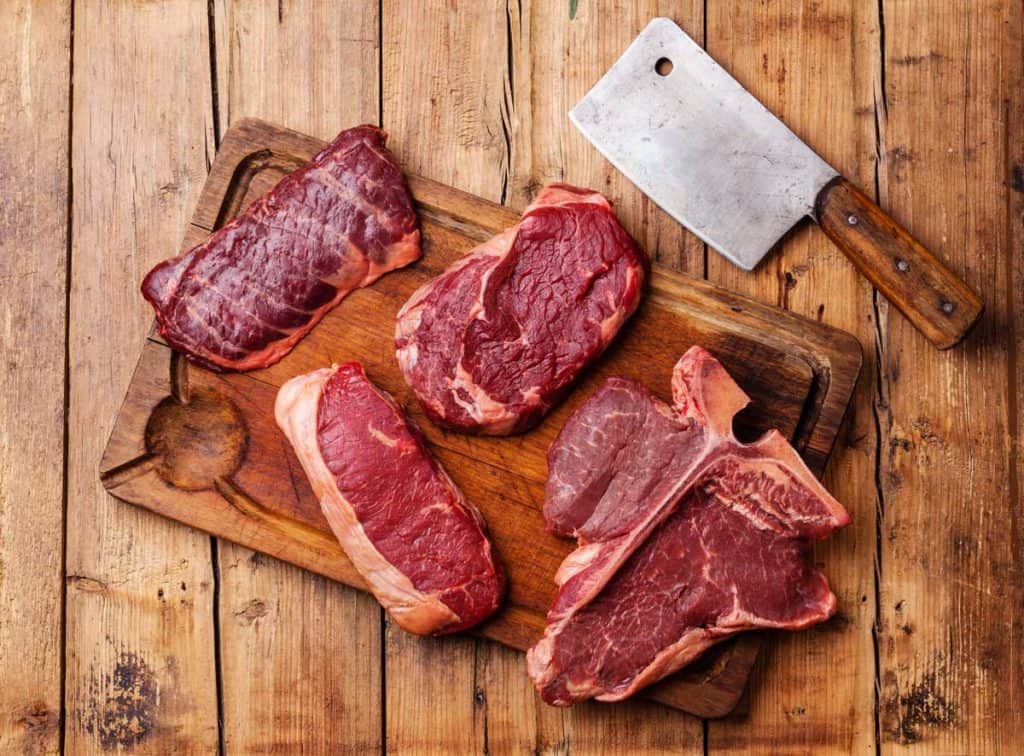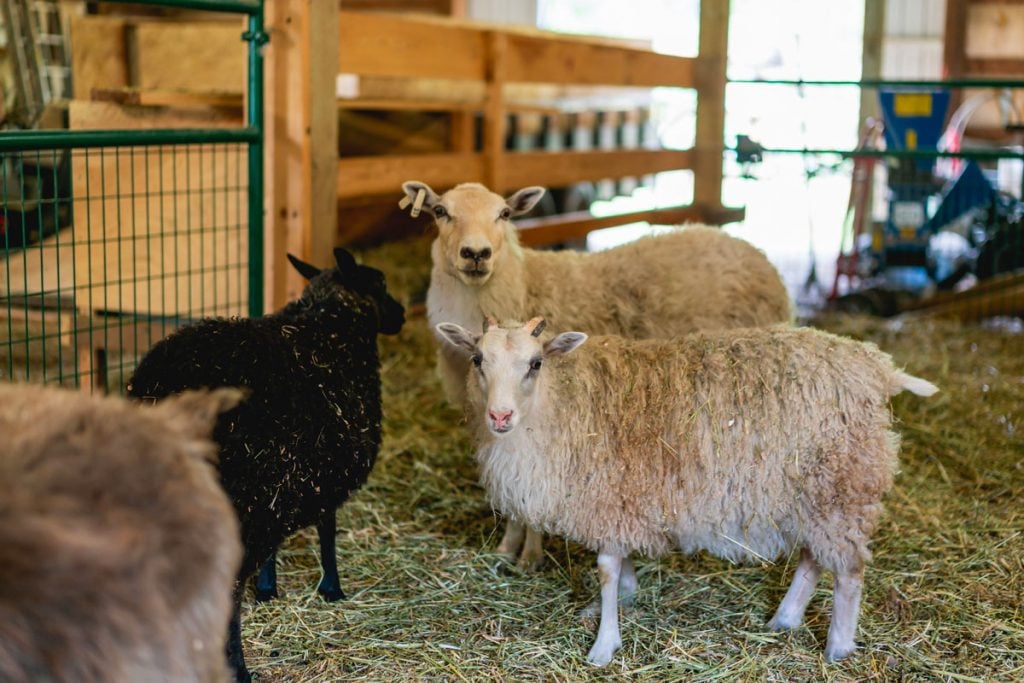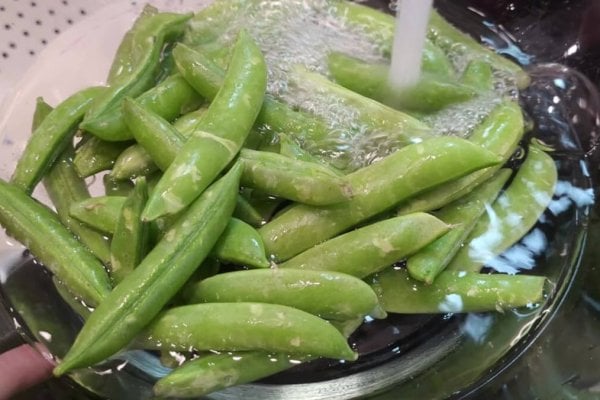How do we know the quality of the meat we’re buying at the grocery store? In this post, we’re decoding meat labels and terminology to understand what we’re getting and how to know it’s the best for us.

When it comes to decoding meat terminology, you really have to understand marketing, especially in the food industry.
The meat companies know you want a high-quality product. However, they don’t want to change how they raise their animals because this generally increases production costs, so they tend to get creative when it comes to labeling and marketing.
You’ll never find meat on the shelf that says, “Inhumanely treated and poorly fed.” So it’s up to us as consumers to know what we’re buying and how to decode these meat labels.
Common Labeling Terms
Organic
In the United States, a product cannot be labeled “organic” unless it’s been through a certification process by the USDA.
USDA Organic Animals are provided with some outdoor access, are fed organic feed and are not given hormones or routine antibiotics.
If an animal must be treated with antibiotics, they are removed from the “organic” program. This seal does not explicitly include animal welfare requirements.
We like to think of organic labeling as telling us what’s not in the meat (antibiotics, GMO feed, herbicides, pesticides, etc.), but what this doesn’t tell you is the quality of the animal’s life.
Natural
The term “natural” when it comes to food isn’t a regulated term, and it essentially means nothing. Even “natural” ingredients can be unhealthy. All living animals are “natural.”
This is a term used to try and persuade consumers to think they’re getting a better product. For example, “natural chicken” written in nice green letters may make you think of a chicken that was raised outdoors. However, chickens are technically “natural,” so the natural chicken you’re purchasing may just be regular old, conventionally raised chicken.
Hormone-Free
According to the USDA, “Hormones are not allowed in raising hogs or poultry. Therefore, the claim ‘no hormones added’ cannot be used on the labels of pork or poultry unless it is followed by a statement that says, ‘Federal regulations prohibit the use of hormones.'”
However, in beef and lamb, hormones are allowed. Also, bovine somatotropin (also known as bST) is a bovine growth hormone that’s approved by the FDA to increase milk production. We want to avoid hormones in meat because they will affect our own hormones.
When buying beef, lamb and dairy products, make sure you’re purchasing hormone-free options.
Antibiotic-Free
One of the biggest problems we’re facing today is antibiotic resistance. There are “superbugs” that are forming because of the overuse of antibiotics in today’s culture. These superbugs are not only causing health problems, but also causing issues for our environment.
We want to reduce our dependency on and use of antibiotics, and one of the most heavily used places for antibiotics is on farms.
We recommend looking for antibiotic-free products from the store. According to the USDA, “The terms ‘no antibiotics added’ may be used on labels for meat or poultry products if sufficient documentation is provided by the producer to the Agency demonstrating that the animals were raised without antibiotics.”

Chicken
When it comes to purchasing chicken, poultry or eggs at the grocery store, there are a few terms that all sound great: pasture-raised, free-range and cage-free.
Those are terms we’d all like to equate with our poultry and eggs. The truth is, a standard chicken is raised in a cage without room to move around and likely never sees the light of day. In fact, the barns where these chickens are raised are filled with toxic air, and the people who go into them have to wear masks.
Yet, for some reason, we’re OK with our chicken being raised in these conditions.
Pasture-Raised
The term “pasture-raised” is kind of a tricky one because this term is not regulated by the USDA. Technically speaking, pasture-raised animals have free access to the outdoors throughout their “grow-out period.” But this doesn’t say how much space each animal has or the quality of the land.
There is a certification by the Humane Farm Animal Care (HFAC). If you want to be sure you’re getting pasture-raised poultry that you can feel good about, look for the Certified Humane® label (see image below) along with either “Free Range” or “Pasture Raised.” This means that each hen was given 108 square feet of outdoor space, as well as barn space indoors.
Free-Range
The USDA’s definition of “Free Range” is that birds must have “outdoor access” or “access to the outdoors.” In some cases, this can mean access only through a “pop hole,” with no full-body access to the outdoors and no minimum space requirement. (Source)
Unfortunately, these “pop holes” may only allow the poultry to stick their head outside in order to get some fresh air. It doesn’t necessarily mean what we all think of free-range to mean.
So, if you truly want free-range poultry, look for that Certified Humane stamp.
Cage-Free
Cage-free hens can move freely indoors and usually have access to perches, nest boxes and loose litter during their production cycle.We don’t know how much space each bird is provided unless accompanied by a third-party seal such as Animal Welfare Approved, Certified Humane, Global Animal Partnership or United Egg Producers. (Source)
What to Look For
It’s not ideal for poultry to be fed purely grain/soy as this isn’t their natural diet. Many labels tout an “all-vegetarian diet,” which makes many people feel good, but it shouldn’t. Chickens are omnivores. Also, most vegetarian feeds will be GMO, which is not healthy for the animal and not healthy for us.
The best store-bought poultry products will be organic and free-range. These two terms will ensure your poultry products haven’t had antibiotics (and remember that the use of hormones in chickens isn’t allowed in the United States).
When it comes to purchasing eggs from the grocery store, look for organic, pasture-raised, non-vegetarian fed and soy-free.

Beef
Your standard CAFO beef found in the store isn’t going to have any special labeling. If you’re looking for more naturally-raised beef products, the first one you’re going to see is “grass-fed.”
Why grass-fed? Because cows are supposed to eat grass. They are ruminant animals that are meant to eat grass.
However, in the feedlots, they eat a lot of grain as well as many other products you and I wouldn’t be happy with. We’ve heard stories of cows being fed ground-up chicken feathers and Skittles.
Grass-Fed
If you see beef products that say “grass-fed,” then you can know that animal had continuous outdoor access during the growing season and were only fed grass and forage once weaned.
There are no guidelines provided for the animal’s confinement outside the growing season.
Grass-Finished
Grass-finished beef, which has only eaten grass products its entire life, is a much healthier option to consume. Cattle that have been grass-finished have meat that is richer in Omega 3, linoleic acid, antioxidants and Vitamin E.
If you don’t see “grass-finished” on the package, it’s likely the animal was grain-finished. It is important to know that “grass-finished” isn’t a regulated term, and you may want to do a little more digging to make sure the product you’re buying meets your standards.
When thinking of beef products as a whole, grass-fed is better than conventional meat, and grass-finished is better than grass-fed only. If you can find beef that says 100% grass-fed and grass-finished, you’ll be getting a much higher quality product.
What to Look For
When purchasing beef from the grocery store, look for organic grass-fed and grass-finished options.

Pork
When it comes to pork, it gets a lot simpler. You want to avoid conventionally raised pork, as the living and feeding conditions are not natural. However, pigs are omnivores, so getting pasture-raised pork means your pigs will have access to the outdoors where they can forage for part of their life.
What to Look For
When purchasing pork from the grocery store, look for organic, pastured pork, ideally not solely grain-fed.
Where to Source Meat?
Meat is getting expensive, and if you want to purchase high-quality meat, your price tag is going to get really high.
If you’re tired of purchasing meat from the grocery store and are ready to get a better deal, here are our recommendations:
- Start raising it yourself.
- Find a local farmer where you can purchase animals in “bulk.”
- This could be buying meat chickens in bulk.
- Purchasing a whole, half or quarter of an animal (this is usually an option for cows and pigs).
- Find a local farm that sells farm-fresh eggs.
- Hunt
A good farm will allow you to come onsite, visit their location and see how the operation works. A farmer that’s direct selling will be less expensive than the high-quality store-bought products, but just know it will still cost more than the conventionally raised products.
We love going directly to the farmer because you’re building your local economy instead of sending our dollars overseas.

More Posts You May Enjoy
- Does Homesteading Save You Money?
- Nutritional Benefits of Organ Meats and Cooking Tips
- Our Homestead Journey (Apartment to 40 Acres)
- How to Get Started Homesteading
- 7 Things You Must Do On Your New Homestead
- 8 Things You Need to Know When Buying Homestead Property
- How to Pivot When Things Go Wrong on the Homestead
- Prepping Your Pantry for Winter
- Raising Goats 101: For Dairy with Anne of All Trades
- Building Resilience with Justin Rhodes
- How to Grow a Year’s Worth of Food with Melissa K. Norris
- Health Benefits of Going Off-Grid (Off Grid with Doug and Stacy)


















